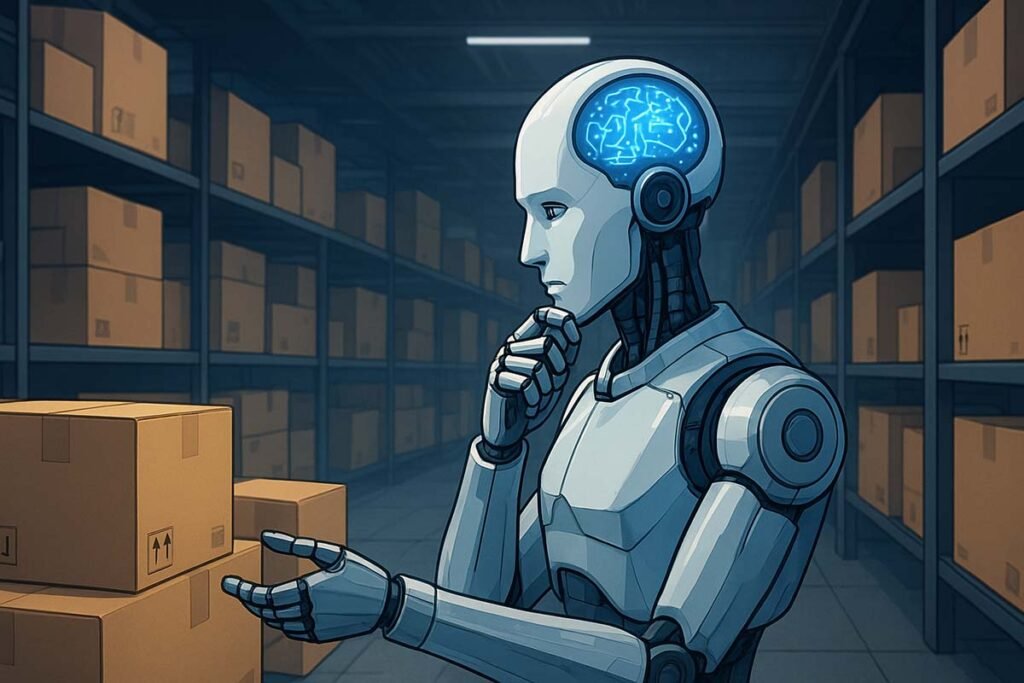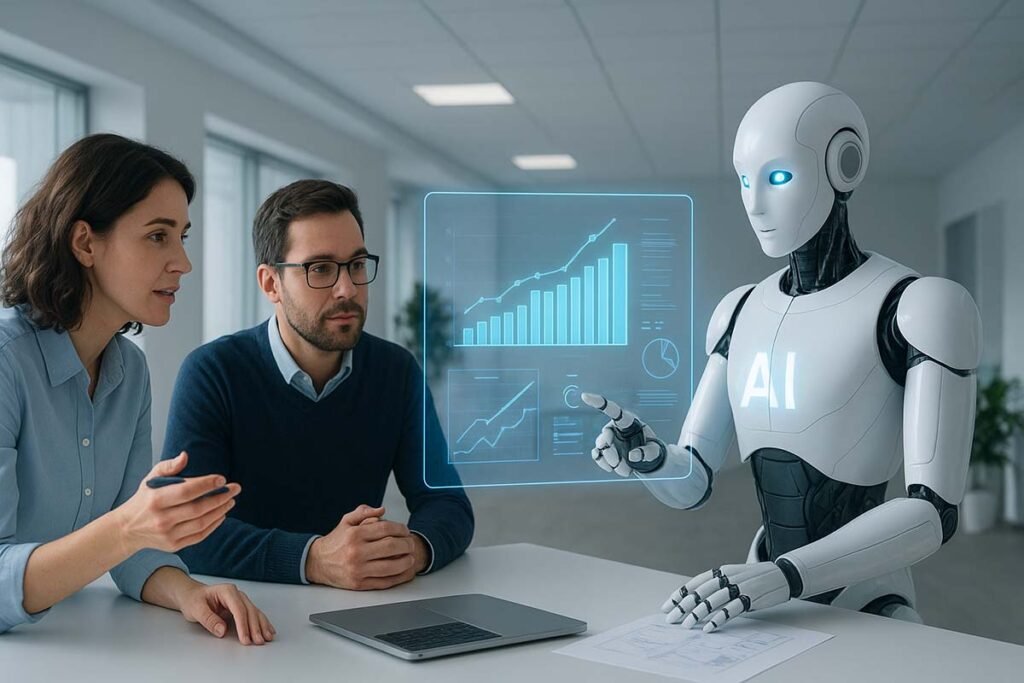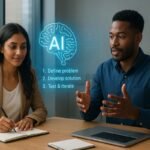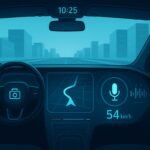Physical AI: Robots have long sparked imagination, from Hollywood blockbusters to futuristic predictions of machines working side by side with humans. Yet, despite decades of hype, real-world robots often felt… underwhelming. Most could only perform narrow, preprogrammed tasks: a factory arm welding car parts, a vacuum navigating your living room, or an assembly-line bot gripping identical objects day after day. What they lacked was a true brain—the ability to reason, adapt, and learn on the fly.
That’s changing now. Nvidia, the company powering the modern AI boom, is bringing intelligence into the physical world with its new robot ‘brain.’ Called “Physical AI” by many experts, this breakthrough gives robots the ability to think and interact step-by-step—not just mimic actions but problem-solve in real environments. This could mark the biggest leap in robotics since their invention.
The Evolution of Robotics: From Automation to Cognition
Robots Before Brains: The Old Era
For decades, robots excelled at:
- Repetition: Industrial robots welding, assembling, or packaging.
- Preprogrammed paths: Guided by sensors and scripts, unable to adapt.
- Narrow functionality: Perfect for controlled environments but helpless in chaos.
Example: Boston Dynamics’ Spot robot dog could walk and navigate complex terrains, but its decisions were still limited by operator commands and predefined code.
Why “Brains” Were the Missing Piece
- Robots couldn’t learn from mistakes in real time.
- No dynamic problem-solving — spill a glass of water on their path, and they stalled.
- They lacked reasoning — vital for collaboration with humans.
Enter Physical AI: Robots That Can Think
What Is “Physical AI”?
Physical AI refers to AI models embedded into physical machines—letting robots not only see and move but also reason, adapt, and make decisions in real environments.
- Integration of Sensors + AI Models → Robots perceive with cameras/LiDAR, then interpret through AI brains.
- Simulation-first training → Robots can “practice” in digital twins before moving in the real world.
- Continuous learning → Robots update knowledge from each action, much like humans.
Nvidia’s Breakthrough ‘Robot Brain’
Nvidia’s leap comes via its Isaac Robotics Platform and Omniverse-powered simulation. The new “robot brain” combines:
- Generative AI – Enables reasoning and natural interaction.
- Digital Twins – Robots are trained in simulated environments before deployment.
- Nvidia GPU-powered LLMs – Allow robots to process language, visual cues, and contextual reasoning at lightning speed.
How Nvidia’s Robot Brain Works
Core Components of the “Brain”
| Component | Function | Impact on Robots |
|---|---|---|
| Perception AI | Processes camera, sensor, and LiDAR inputs. | Robots “see” like humans. |
| Reasoning AI | Uses Large Language Models for logical thinking. | Robots adapt step by step. |
| Motion Planning | Predicts optimal movements safely. | Robots navigate without collisions. |
| Learning Loop | Updates skills from past experiences. | Robots improve over time. |
Real-Time Example
Imagine a warehouse robot tasked with organizing inventory:
- Old robots: Followed fixed routes, froze if an obstacle appeared.
- Nvidia’s brain-powered robots:
- See the obstacle, reason: “Instead, take path B.”
- Ask for clarification if unsure.
- Learn from the situation for faster adaptation next time.
Real-World Applications of Physical AI
1. Manufacturing and Warehousing
- Smarter assembly robots that “think” during unexpected changes.
- Warehouse bots that adapt to shifting layouts or urgent orders.
Case Study: Amazon has been testing AI robots for dynamic picking errors. Nvidia’s brain tech could accelerate this.
2. Healthcare Robotics
- Hospital assistance bots delivering medicines.
- Surgery-support robots reasoning through multiple scenarios.
Example: Robotic nurses trained to move through crowded ERs with real-time reasoning.
3. Service Industry
- Restaurant or hotel robots that take orders, adapt to language, and navigate crowds seamlessly.
- Personal assistants for elderly care that anticipate needs.
4. Autonomous Vehicles & Delivery
- Drones that can handle unexpected wind currents.
- Self-driving delivery bots that learn traffic nuances.
5. Construction & Field Work
- Robots analyzing dynamic construction sites, adjusting paths and tasks.
- Farming bots deciding optimal crop maintenance steps.

Expert Opinions: The Human-Robot Collaboration Era
- Jensen Huang (Nvidia CEO): “Every company will eventually be a robotics company. Physical AI gives robots the intelligence to partner with humans across industries.”
- Prof. Fei-Fei Li (Stanford AI): “Robots with reasoning intelligence mean moving from narrow automation to versatile, collaborative agents.”
- Case Study Insight: A pilot project in Texas used Nvidia’s brain-driven robots for logistics, reducing operational bottlenecks by 22% in the first year.
Physical AI vs Traditional Robotics
| Feature | Traditional Robots | Nvidia’s Brain-Powered Robots |
|---|---|---|
| Programming | Pre-scripted | Adaptive reasoning |
| Flexibility | Narrow | Broad, multi-task capable |
| Learning | None or limited | Continuous improvement |
| Human Interaction | Minimal | Natural language + context aware |
| Industry Impact | Automation only | Collaboration + decision support |
Challenges and Ethical Questions
Challenges
- Processing demands – Reasoning AI requires high computing power (GPU reliance).
- Training costs – Simulation + deployment remain costly.
- Trust factor – Businesses may hesitate to rely on autonomous reasoning.
Ethical Considerations
- Should robots replace human jobs or augment them?
- How much decision-making power should we hand to machines?
- Autonomy vs human control: keeping humans “in the loop” is critical.
Future Outlook: What’s Next for Physical AI?
- Personal robotics boom: In 5–10 years, U.S. households may have AI-powered helpers.
- Mass adoption in construction: Robots could address labor shortages.
- Cross-industry AI standardization: Nvidia’s platform may become the “OS for robots.”
- Human-robot co-working norm: Instead of humans supervising robots, they’ll work side by side.
Robots finally got brains—and it’s thanks to Nvidia’s leap into Physical AI. Instead of simple task automation, robots can now reason, adapt, and collaborate like mini scientists in real-world environments. From healthcare to construction to everyday home use, Nvidia’s robotic brain could be as transformative to industries as the smartphone was to communication.
The future isn’t about humans vs robots. It’s about humans with robots—working together smarter, faster, and more creatively.
👉 Would you trust an AI-powered robot to collaborate with you at home or work? Share your thoughts in the comments!
FAQs
Q1. What is Physical AI?
Physical AI refers to intelligent robots equipped with reasoning AI models, enabling them to think, adapt, and learn in real-life environments.
Q2. How is Nvidia involved in Physical AI?
Nvidia developed advanced robotic platforms (Isaac + Omniverse) to give robots adaptive brains powered by AI reasoning and simulation training.
Q3. How do AI-powered robots differ from traditional ones?
Unlike preprogrammed robots, AI-powered robots can learn from experience, adapt in real time, and interact naturally with humans.
Q4. What industries will Physical AI impact first?
Manufacturing, logistics, healthcare, and service industries are leading adopters.
Q5. Will robots with AI replace human jobs?
They are more likely to augment human jobs, handling repetitive tasks while enabling humans to focus on creativity and complex decisions.
Q6. What challenges remain for Physical AI?
High GPU processing costs, safety, and ethical considerations about autonomy and human control remain key challenges.




Pingback: Quantum Computing for Beginners: Why It Matters Now - FirstsPost